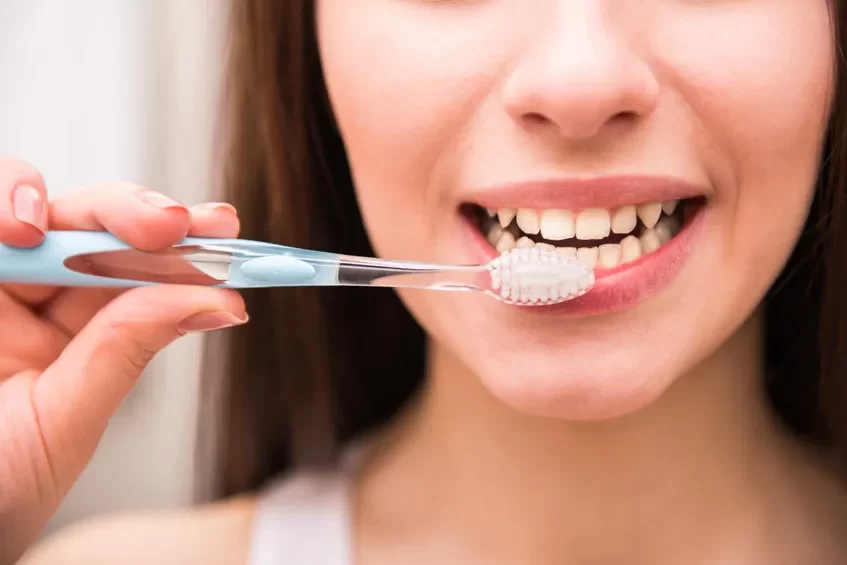
What Is the Best Oral Hygiene Routine for Healthy Teeth? Essential Tips for a Bright Smile
- Understanding the Importance of Oral Hygiene
- The Right Brushing Technique for Healthy Teeth
- Flossing: An Essential Step for Oral Health
- Using Mouthwash: A Step Toward Comprehensive Oral Care
- The Role of Diet in Oral Hygiene
- Common Oral Hygiene Mistakes to Avoid
- Real-Life Oral Hygiene Tips for Busy People
- Conclusion: A Routine for Healthy, Radiant Teeth
Maintaining proper oral hygiene is essential for having healthy teeth and gums. Good oral hygiene practices help prevent cavities, gum disease, and bad breath, as well as protect your overall health. Brushing and flossing are the foundation of any strong oral care routine, but it is important to follow a well-rounded approach that includes other habits and practices.
The Right Brushing Technique for Healthy Teeth
Brushing your teeth is one of the most important parts of your daily oral hygiene routine. However, not all brushing techniques are created equal. To get the most out of your brushing session, follow these key tips:
- Brush Twice a Day: Brushing your teeth at least twice a day—once in the morning and once before bed—is crucial for removing plaque and preventing tooth decay.
- Use the Right Toothbrush: Choose a toothbrush with soft bristles to prevent damaging your gums. Consider using an electric toothbrush for more effective plaque removal.
- Proper Brushing Technique: Hold the toothbrush at a 45-degree angle to your gums, and brush in gentle circular motions. Avoid brushing too hard, as this can cause enamel erosion.
- Use Fluoride Toothpaste: Fluoride helps strengthen tooth enamel and prevent cavities. Choose a toothpaste that contains fluoride to maximize the benefits of your brushing routine.
By brushing effectively and consistently, you can remove plaque, reduce the risk of cavities, and keep your teeth looking bright.
Flossing: An Essential Step for Oral Health
While brushing is essential for cleaning the surface of your teeth, flossing is just as important for cleaning between your teeth and along the gum line. Here's why:
- Removes Plaque and Food Particles: Flossing helps remove food particles and plaque from areas where your toothbrush can't reach, such as between your teeth and beneath the gumline.
- Prevents Gum Disease: By cleaning between your teeth, flossing prevents the buildup of plaque and tartar, which can lead to gingivitis and other forms of gum disease.
- Promotes Fresh Breath: Flossing removes trapped food and bacteria that can cause bad breath, leaving your mouth feeling fresher.
Make sure to floss at least once a day. Use a gentle sawing motion to slide the floss between your teeth and curve it around each tooth to ensure thorough cleaning.
Using Mouthwash: A Step Toward Comprehensive Oral Care
While brushing and flossing are the foundation of your oral hygiene routine, mouthwash can be a valuable addition to your daily care. Mouthwash helps to:
- Freshen Breath: Mouthwash can temporarily mask bad breath and leave your mouth feeling fresh.
- Kill Bacteria: Many mouthwashes contain antimicrobial agents that help kill bacteria, preventing plaque buildup and gum disease.
- Strengthen Teeth: Some mouthwashes contain fluoride, which helps strengthen your enamel and fight cavities.
Choose a mouthwash that fits your needs—whether it's a fluoride rinse for cavity protection or an antimicrobial rinse to help fight gum disease. Use mouthwash after brushing and flossing for the best results.
The Role of Diet in Oral Hygiene
Your oral hygiene routine isn't just about brushing, flossing, and rinsing. What you eat plays a significant role in your oral health. A healthy diet helps strengthen teeth, prevent decay, and promote gum health. Consider the following:
- Eat Calcium-Rich Foods: Calcium strengthens tooth enamel. Include dairy products, leafy greens, and almonds in your diet for better oral health.
- Limit Sugary Foods and Drinks: Sugar fuels the bacteria that cause plaque and cavities. Minimize your intake of sugary snacks, sodas, and juices to keep your teeth healthy.
- Stay Hydrated: Drinking water helps wash away food particles and keeps your mouth hydrated, promoting better oral health.
By making healthy food choices, you can support your oral hygiene routine and improve your long-term dental health.
Common Oral Hygiene Mistakes to Avoid
Even with a good oral hygiene routine, some common mistakes can undermine your efforts. Avoid the following:
- Brushing Too Hard: Brushing too aggressively can wear down your enamel and irritate your gums. Use gentle strokes instead.
- Skipping Flossing: Many people skip flossing because they feel their toothbrush is enough. However, flossing is crucial for cleaning between teeth and preventing gum disease.
- Not Replacing Your Toothbrush: A worn-out toothbrush won't clean effectively. Replace your toothbrush or toothbrush head every three to four months.
By avoiding these mistakes, you can improve the effectiveness of your oral hygiene routine and maintain healthier teeth and gums.
Real-Life Oral Hygiene Tips for Busy People
Maintaining a consistent oral hygiene routine can be challenging for people with busy lifestyles. Here are some tips to help you stay on track:
- Set a Timer: Use a timer to make sure you're brushing for the recommended two minutes.
- Carry Floss: Keep a small container of floss with you so you can clean your teeth on the go, especially after meals.
- Incorporate Oral Care Into Your Routine: Try to brush and floss at the same time every day to make it a habit.
With these small adjustments, you can ensure that your oral hygiene routine fits into your busy schedule without sacrificing effectiveness.
Conclusion: A Routine for Healthy, Radiant Teeth
The best oral hygiene routine involves more than just brushing. It includes proper brushing techniques, flossing, mouthwash, a healthy diet, and avoiding common mistakes. By following these steps, you can maintain healthy teeth and gums for a lifetime.
If you want to take your oral hygiene routine to the next level, visit Dentistry Toothtruth for expert advice and high-quality dental care products.

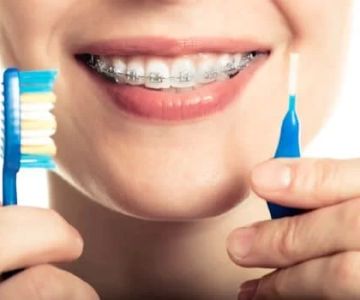
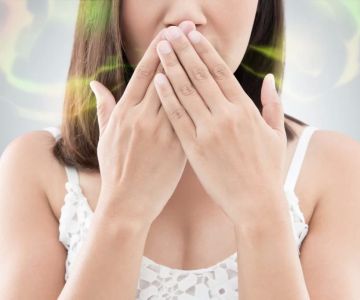
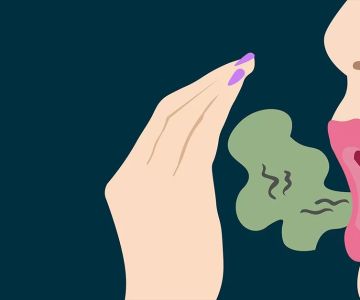
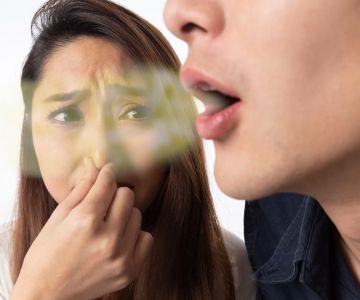
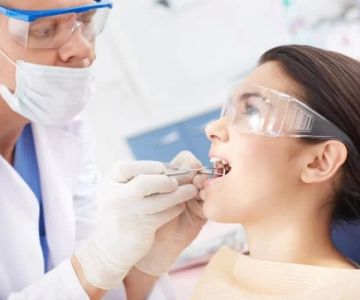
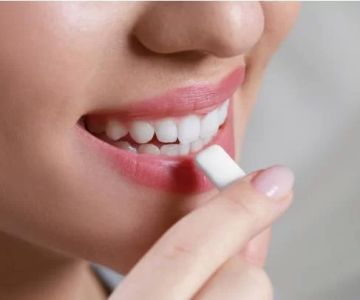
 Fox Family Dental
Fox Family Dental The Dental Center of Eagan
The Dental Center of Eagan Kathleen Schultz, DMD
Kathleen Schultz, DMD Aspen Dental
Aspen Dental Udis & Sethi Orthodontics
Udis & Sethi Orthodontics Willamette Dental Group - Portland - Jefferson
Willamette Dental Group - Portland - Jefferson The Importance of Oral Health Education During Pregnancy for a Healthy Pregnancy
The Importance of Oral Health Education During Pregnancy for a Healthy Pregnancy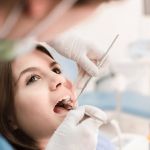 Why Skipping Dental Checkups Can Lead to Bigger Oral Health Problems
Why Skipping Dental Checkups Can Lead to Bigger Oral Health Problems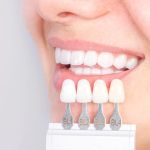 Advantages of Porcelain Dental Restorations
Advantages of Porcelain Dental Restorations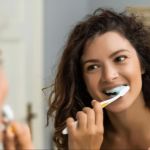 Best Tips for Brushing Your Teeth Properly for Healthy Gums: Essential Techniques for Oral Health
Best Tips for Brushing Your Teeth Properly for Healthy Gums: Essential Techniques for Oral Health How Can Diabetes Cause Tooth and Gum Problems? Preventing and Managing Oral Health Issues
How Can Diabetes Cause Tooth and Gum Problems? Preventing and Managing Oral Health Issues Healthy Habits for Promoting Good Oral Health and Hygiene: Tips for a Healthy Smile
Healthy Habits for Promoting Good Oral Health and Hygiene: Tips for a Healthy Smile